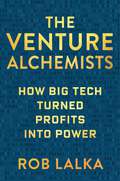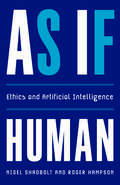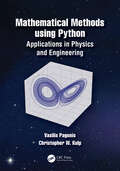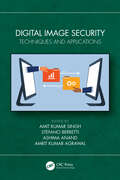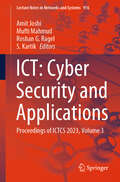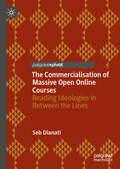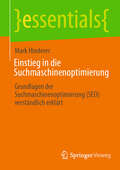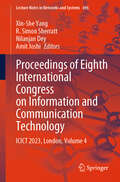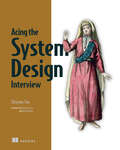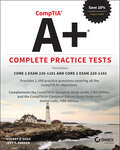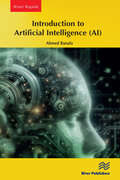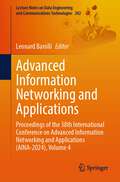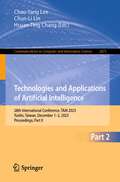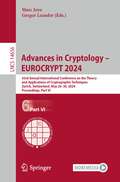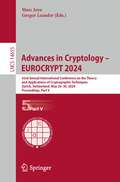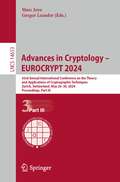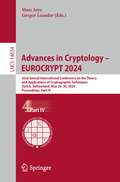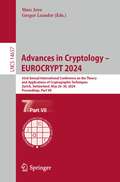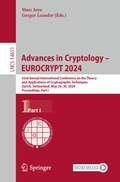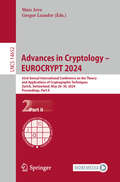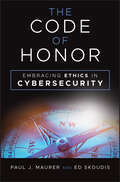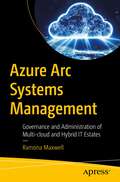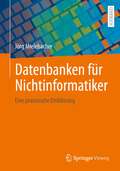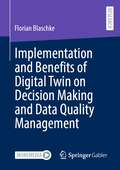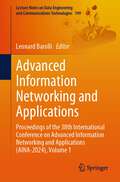- Table View
- List View
The Venture Alchemists: How Big Tech Turned Profits Into Power
by Rob LalkaWe once idolized tech entrepreneurs for creating innovations that seemed like modern miracles. Yet our faith has been shattered. We now blame them for spreading lies, breaking laws, and causing chaos. Yesterday’s Silicon Valley darlings have become today’s Big Tech villains. Which is it? Are they superheroes or scoundrels? Or is it more complicated, some blend of both?In The Venture Alchemists, Rob Lalka demystifies how tech entrepreneurs built empires that made trillions. Meta started as a cruel Halloween prank, Alphabet began as a master’s thesis that warned against corporate deception, and Palantir came from a campus controversy over hateful speech. These largely forgotten origin stories show how ordinary fears and youthful ambitions shaped their ventures—making each tech tale relatable, both wonderfully and tragically human. Readers learn about the adversities tech entrepreneurs overcame, the troubling tradeoffs they made, and the tremendous power they now wield. Using leaked documents and previously unpublished archival material, Lalka takes readers inside Big Tech’s worst exploitations and abuses, alongside many good intentions and moral compromises.But this story remains unfinished, and The Venture Alchemists ultimately offers hope from the people who, decades ago, warned about the risks of the emerging Internet. Their insights illuminate a path toward more responsible innovations, so that technologies aren’t dangerous weapons but valuable tools that ensure progress, improve society, and enhance our daily lives.
As If Human: Ethics and Artificial Intelligence
by Nigel Shadbolt Roger HampsonA new approach to the challenges surrounding artificial intelligence that argues for assessing AI actions as if they came from a human being Intelligent machines present us every day with urgent ethical challenges. Is the facial recognition software used by an agency fair? When algorithms determine questions of justice, finance, health, and defense, are the decisions proportionate, equitable, transparent, and accountable? How do we harness this extraordinary technology to empower rather than oppress? Despite increasingly sophisticated programming, artificial intelligences share none of our essential human characteristics—sentience, physical sensation, emotional responsiveness, versatile general intelligence. However, Nigel Shadbolt and Roger Hampson argue, if we assess AI decisions, products, and calls for action as if they came from a human being, we can avert a disastrous and amoral future. The authors go beyond the headlines about rampant robots to apply established moral principles in shaping our AI future. Their new framework constitutes a how-to for building a more ethical machine intelligence.
Mathematical Methods using Python: Applications in Physics and Engineering
by Vasilis Pagonis Christopher Wayne KulpThis advanced undergraduate textbook presents a new approach to teaching mathematical methods for scientists and engineers. It provides a practical, pedagogical introduction to utilizing Python in Mathematical and Computational Methods courses. Both analytical and computational examples are integrated from its start. Each chapter concludes with a set of problems designed to help students hone their skills in mathematical techniques, computer programming, and numerical analysis. The book places less emphasis on mathematical proofs, and more emphasis on how to use computers for both symbolic and numerical calculations. It contains 182 extensively documented coding examples, based on topics that students will encounter in their advanced courses in Mechanics, Electronics, Optics, Electromagnetism, Quantum Mechanics etc.An introductory chapter gives students a crash course in Python programming and the most often used libraries (SymPy, NumPy, SciPy, Matplotlib). This is followed by chapters dedicated to differentiation, integration, vectors and multiple integration techniques. The next group of chapters covers complex numbers, matrices, vector analysis and vector spaces. Extensive chapters cover ordinary and partial differential equations, followed by chapters on nonlinear systems and on the analysis of experimental data using linear and nonlinear regression techniques, Fourier transforms, binomial and Gaussian distributions. The book is accompanied by a dedicated GitHub website, which contains all codes from the book in the form of ready to run Jupyter notebooks. A detailed solutions manual is also available for instructors using the textbook in their courses.Key Features:· A unique teaching approach which merges mathematical methods and the Python programming skills which physicists and engineering students need in their courses.· Uses examples and models from physical and engineering systems, to motivate the mathematics being taught.· Students learn to solve scientific problems in three different ways: traditional pen-and-paper methods, using scientific numerical techniques with NumPy and SciPy, and using Symbolic Python (SymPy).Vasilis Pagonis is Professor of Physics Emeritus at McDaniel College, Maryland, USA. His research area is applications of thermally and optically stimulated luminescence. He taught courses in mathematical physics, classical and quantum mechanics, analog and digital electronics and numerous general science courses. Dr. Pagonis’ resume lists more than 200 peer-reviewed publications in international journals. He is currently associate editor of the journal Radiation Measurements. He is co-author with Christopher Kulp of the undergraduate textbook “Classical Mechanics: a computational approach, with examples in Python and Mathematica” (CRC Press, 2020). He has also co-authored four graduate-level textbooks in the field of luminescence dosimetry, and most recently published the book “Luminescence Signal analysis using Python” (Springer, 2022).Christopher Kulp is the John P. Graham Teaching Professor of Physics at Lycoming College. He has been teaching undergraduate physics at all levels for 20 years. Dr. Kulp’s research focuses on modelling complex systems, time series analysis, and machine learning. He has published 30 peer-reviewed papers in international journals, many of which include student co-authors. He is also co-author of the undergraduate textbook “Classical Mechanics: a computational approach, with examples in Python and Mathematica” (CRC Press, 2020).
Digital Image Security: Techniques and Applications
by Amit Kumar Singh Stefano Berretti Ashima Anand Amrit Kumar AgrawalThis book will highlight cutting-edge research with a particular emphasis on interdisciplinary approaches, novel techniques, and solutions to provide digital image security for applications in diverse areas. It further discusses important topics such as biometric imaging, big data security and privacy in healthcare, security and privacy in the internet of things, and security in cloud-based image processing.This book Presents new ideas, approaches, theories, and practices with a focus on digital image security and privacy solutions for real-world applications. Discusses security in cloud-based image processing for smart city applications. Provides an overview of innovative security techniques that are being developed to ensure the guaranteed authenticity of transmitted, shared, or stored digital images. Highlights approaches such as watermarking, blockchain, and hashing. to secure digital images in artificial intelligence, machine learning, cloud computing, and temper detection environments. Explains important topics such as biometric imaging, blockchain for digital data security, and protection systems against personal identity theft. It will serve as an ideal reference text for senior undergraduate, graduate students, academic researchers, and professionals in the fields including electrical engineering, electronics, communications engineering, and computer engineering.
ICT: Proceedings of ICTCS 2023, Volume 3 (Lecture Notes in Networks and Systems #916)
by Amit Joshi Mufti Mahmud Roshan G. Ragel S. KartikThis book contains best selected research papers presented at ICTCS 2023: Eighth International Conference on Information and Communication Technology for Competitive Strategies. The conference will be held in Jaipur, India during 8 – 9 December 2023. The book covers state-of-the-art as well as emerging topics pertaining to ICT and effective strategies for its implementation for engineering and managerial applications. This book contains papers mainly focused on ICT for computation, algorithms and data analytics and IT security. The work is presented in three volumes.
The Commercialisation of Massive Open Online Courses: Reading Ideologies in Between the Lines
by Seb DianatiThis book critically examines the role of Massive Open Online Courses (MOOCs) in higher education, against the backdrop of rapid developments in online learning. Reporting on a method by which one could isolate ideologically charged words from websites, the author underlines the need to pause, question and understand the underlying motives behind MOOCs, and ask fundamental questions about their data use, commercial interests, and ability to provide ‘good’ education. With its step-by-step ideological analysis, the author challenges educators, policymakers, and students alike to reconsider the fabric of online courses and their associated platforms. The book will appeal to scholars of digital education and sociology, as well as scholars from the critical sciences.
Einstieg in die Suchmaschinenoptimierung: Grundlagen der Suchmaschinenoptimierung (SEO) verständlich erklärt (essentials)
by Mark HindererBekommen Sie einen grundlegenden, aber umfassenden Überblick über die Arbeitsweise von Suchmaschinen und wie sie Inhalte von Websites auslesen und bewerten. Lernen Sie Möglichkeiten zur Optimierung der eigenen Website kennen und steigern Sie so die Besuchszahlen Ihrer Website. Wie optimiert man die eigene Website, um das Potenzial der Suchmaschinenoptimierung (SEO) auszuschöpfen und die Erwartungshaltung hinter der Suchanfrage so zu erfüllen, dass ein positives Nutzungserlebnis geschaffen wird? Welche Faktoren einer Website können zu einem Rankingverlust führen und sollten vermieden werden, um nicht dem Wettbewerb die bessere Position in den Suchergebnissen zu überlassen?
Proceedings of Eighth International Congress on Information and Communication Technology: ICICT 2023, London, Volume 4 (Lecture Notes in Networks and Systems #696)
by Xin-She Yang R. Simon Sherratt Nilanjan Dey Amit JoshiThis book gathers selected high-quality research papers presented at the Eighth International Congress on Information and Communication Technology, held at Brunel University, London, on 20–23 February 2023. It discusses emerging topics pertaining to information and communication technology (ICT) for managerial applications, e-governance, e-agriculture, e-education and computing technologies, the Internet of Things (IoT) and e-mining. Written by respected experts and researchers working on ICT, the book offers a valuable asset for young researchers involved in advanced studies. The work is presented in four volumes.
Acing the System Design Interview
by Zhiyong TanThe system design interview is one of the hardest challenges you&’ll face in the software engineering hiring process. This practical book gives you the insights, the skills, and the hands-on practice you need to ace the toughest system design interview questions and land the job and salary you want.In Acing the System Design Interview you will master a structured and organized approach to present system design ideas like: Scaling applications to support heavy traffic Distributed transactions techniques to ensure data consistency Services for functional partitioning such as API gateway and service mesh Common API paradigms including REST, RPC, and GraphQL Caching strategies, including their tradeoffs Logging, monitoring, and alerting concepts that are critical in any system design Communication skills that demonstrate your engineering maturity Don&’t be daunted by the complex, open-ended nature of system design interviews! In this in-depth guide, author Zhiyong Tan shares what he&’s learned on both sides of the interview table. You&’ll dive deep into the common technical topics that arise during interviews and learn how to apply them to mentally perfect different kinds of systems. Foreword by Anthony Asta, Michael D. Elder. About the technology The system design interview is daunting even for seasoned software engineers. Fortunately, with a little careful prep work you can turn those open-ended questions and whiteboard sessions into your competitive advantage! In this powerful book, Zhiyong Tan reveals practical interview techniques and insights about system design that have earned developers job offers from Amazon, Apple, ByteDance, PayPal, and Uber. About the book Acing the System Design Interview is a masterclass in how to confidently nail your next interview. Following these easy-to-remember techniques, you&’ll learn to quickly assess a question, identify an advantageous approach, and then communicate your ideas clearly to an interviewer. As you work through this book, you&’ll gain not only the skills to successfully interview, but also to do the actual work of great system design. What's inside Insights on scaling, transactions, logging, and more Practice questions for core system design concepts How to demonstrate your engineering maturity Great questions to ask your interviewer About the reader For software engineers, software architects, and engineering managers looking to advance their careers. About the author Zhiyong Tan is a manager at PayPal. He has worked at Uber, Teradata, and at small startups. Over the years, he has been in many system design interviews, on both sides of the table. The technical editor on this book was Mohit Kumar. Table of Contents PART 1 1 A walkthrough of system design concepts 2 A typical system design interview flow 3 Non-functional requirements 4 Scaling databases 5 Distributed transactions 6 Common services for functional partitioning PART 2 7 Design Craigslist 8 Design a rate-limiting service 9 Design a notification/alerting service 10 Design a database batch auditing service 11 Autocomplete/typeahead 12 Design Flickr 13 Design a Content Distribution Network (CDN) 14 Design a text messaging app 15 Design Airbnb 16 Design a news feed 17 Design a dashboard of top 10 products on Amazon by sales volume Appendix A Monoliths vs. microservices Appendix B OAuth 2.0 authorization and OpenID Connect authentication Appendix C C4 Model Appendix D Two-phase commit (2PC)
CompTIA A+ Complete Practice Tests: Core 1 Exam 220-1101 and Core 2 Exam 220-1102
by Audrey O'Shea Jeff T. ParkerImprove your understanding of all Core 1 and Core 2 A+ exam objectives and prepare for a new career as a computer technician The Third Edition of the CompTIA A+ Complete Practice Tests: Core 1 Exam 220-1101 and Core 2 Exam 220-1102 offers aspiring and practicing computer technicians essential and practical exam prep material for the industry favorite A+ certification. The hundreds of domain-by-domain practice questions cover all of the A+ exam objectives tested on the Core 1 and Core 2 exams, helping you prepare for success on the tests and in the real world. Just like the real exams, the practice questions contained within this resource cover mobile devices, networking, hardware, virtualization and cloud computing, hardware and network troubleshooting, operating systems, security, software troubleshooting, and operational procedures. These rigorous and realistic practice questions will get you ready for your first role as a computer technician and let you hit the ground running. This comprehensive set includes: Challenging questions designed to advance your understanding and comprehension of all covered exam domains Questions similar to those found on the real Core 1 and Core 2 A+ exams Access to the Sybex online test bank, with hundreds of questions and full-length practice exams Perfect for anyone prepping for the Core 1 and Core 2 A+ exams, CompTIA A+ Complete Practice Tests: Core 1 Exam 220-1101 and Core 2 Exam 220-1102 is also an ideal resource for aspiring and early-career computer technicians who want to improve their understanding of some of the foundational concepts they rely on each day in the field. And save 10% when you purchase your CompTIA exam voucher with our exclusive WILEY10 coupon code.
Introduction to Artificial Intelligence (AI)
by Ahmed BanafaIntroduction to Artificial Intelligence (AI) provides a comprehensive overview of the latest trends in artificial intelligence. The book covers the state of the art in AI research, including machine learning, natural language processing, computer vision, and robotics.The book offers a forward-looking perspective on the future of AI, exploring the emerging trends and applications that are likely to shape the next decade of AI innovation. It also provides practical guidance for businesses and individuals on how to leverage the power of AI to create new products, services, and opportunities.Overall, the book is an essential read for anyone who wants to stay ahead of the curve in the rapidly evolving field of AI and understand the impact that this transformative technology will have on our lives in the coming years.
Advanced Information Networking and Applications: Proceedings of the 38th International Conference on Advanced Information Networking and Applications (AINA-2024), Volume 4 (Lecture Notes on Data Engineering and Communications Technologies #202)
by Leonard BarolliThe aim of the book is to provide latest research findings, innovative research results, methods, and development techniques from both theoretical and practical perspectives related to the emerging areas of information networking and applications. Networks of today are going through a rapid evolution, and there are many emerging areas of information networking and their applications. Heterogeneous networking supported by recent technological advances in low power wireless communications along with silicon integration of various functionalities such as sensing, communications, intelligence, and actuations is emerging as a critically important disruptive computer class based on a new platform, networking structure, and interface that enable novel, low-cost and high-volume applications. Several of such applications have been difficult to realize because of many interconnection problems. To fulfill their large range of applications different kinds of networks need to collaborate and wired and next-generation wireless systems should be integrated in order to develop high-performance computing solutions to problems arising from the complexities of these networks. This book covers the theory, design, and applications of computer networks, distributed computing, and information systems.
Technologies and Applications of Artificial Intelligence: 28th International Conference, TAAI 2023, Yunlin, Taiwan, December 1–2, 2023, Proceedings, Part II (Communications in Computer and Information Science #2075)
by Chao-Yang Lee Chun-Li Lin Hsuan-Ting ChangThis book constitutes the proceedings of the 28th International Conference on Technologies and Applications of Artificial Intelligence, TAAI 2023, which was held in Yunlin, Taiwan, during December 1–2, 2023.The 35 full papers and 12 short papers included in this book were carefully reviewed and selected from 193 submissions. The TAAI 2023 provides a platform for experts and scholars from domestic and international universities, research units, and industries to exchange AI technologies and application results.
Advances in Cryptology – EUROCRYPT 2024: 43rd Annual International Conference on the Theory and Applications of Cryptographic Techniques, Zurich, Switzerland, May 26–30, 2024, Proceedings, Part VI (Lecture Notes in Computer Science #14656)
by Marc Joye Gregor LeanderThe 7-volume set LNCS 14651 - 14657 conference volume constitutes the proceedings of the 43rd Annual International Conference on the Theory and Applications of Cryptographic Techniques, EUROCRYPT 2024, held in in Zurich, Switzerland, in May 2024. The 105 papers included in these proceedings were carefully reviewed and selected from 500 submissions. They were organized in topical sections as follows: Part I: Awarded papers; symmetric cryptology; public key primitives with advanced functionalities; Part II: Public key primitives with advances functionalities; Part III: AI and blockchain; secure and efficient implementation, cryptographic engineering, and real-world cryptography; theoretical foundations; Part IV: Theoretical foundations; Part V: Multi-party computation and zero-knowledge; Part VI: Multi-party computation and zero-knowledge; classic public key cryptography, Part VII: Classic public key cryptography.
Advances in Cryptology – EUROCRYPT 2024: 43rd Annual International Conference on the Theory and Applications of Cryptographic Techniques, Zurich, Switzerland, May 26–30, 2024, Proceedings, Part V (Lecture Notes in Computer Science #14655)
by Marc Joye Gregor LeanderThe 7-volume set LNCS 14651 - 14657 conference volume constitutes the proceedings of the 43rd Annual International Conference on the Theory and Applications of Cryptographic Techniques, EUROCRYPT 2024, held in in Zurich, Switzerland, in May 2024. The 105 papers included in these proceedings were carefully reviewed and selected from 500 submissions. They were organized in topical sections as follows: Part I: Awarded papers; symmetric cryptology; public key primitives with advanced functionalities; Part II: Public key primitives with advances functionalities; Part III: AI and blockchain; secure and efficient implementation, cryptographic engineering, and real-world cryptography; theoretical foundations; Part IV: Theoretical foundations; Part V: Multi-party computation and zero-knowledge; Part VI: Multi-party computation and zero-knowledge; classic public key cryptography, Part VII: Classic public key cryptography.
Advances in Cryptology – EUROCRYPT 2024: 43rd Annual International Conference on the Theory and Applications of Cryptographic Techniques, Zurich, Switzerland, May 26–30, 2024, Proceedings, Part III (Lecture Notes in Computer Science #14653)
by Marc Joye Gregor LeanderThe 7-volume set LNCS 14651 - 14657 conference volume constitutes the proceedings of the 43rd Annual International Conference on the Theory and Applications of Cryptographic Techniques, EUROCRYPT 2024, held in in Zurich, Switzerland, in May 2024. The 105 papers included in these proceedings were carefully reviewed and selected from 500 submissions. They were organized in topical sections as follows: Part I: Awarded papers; symmetric cryptology; public key primitives with advanced functionalities; Part II: Public key primitives with advances functionalities; Part III: AI and blockchain; secure and efficient implementation, cryptographic engineering, and real-world cryptography; theoretical foundations; Part IV: Theoretical foundations; Part V: Multi-party computation and zero-knowledge; Part VI: Multi-party computation and zero-knowledge; classic public key cryptography, Part VII: Classic public key cryptography.
Advances in Cryptology – EUROCRYPT 2024: 43rd Annual International Conference on the Theory and Applications of Cryptographic Techniques, Zurich, Switzerland, May 26–30, 2024, Proceedings, Part IV (Lecture Notes in Computer Science #14654)
by Marc Joye Gregor LeanderThe 7-volume set LNCS 14651 - 14657 conference volume constitutes the proceedings of the 43rd Annual International Conference on the Theory and Applications of Cryptographic Techniques, EUROCRYPT 2024, held in in Zurich, Switzerland, in May 2024. The 105 papers included in these proceedings were carefully reviewed and selected from 500 submissions. They were organized in topical sections as follows: Part I: Awarded papers; symmetric cryptology; public key primitives with advanced functionalities; Part II: Public key primitives with advances functionalities; Part III: AI and blockchain; secure and efficient implementation, cryptographic engineering, and real-world cryptography; theoretical foundations; Part IV: Theoretical foundations; Part V: Multi-party computation and zero-knowledge; Part VI: Multi-party computation and zero-knowledge; classic public key cryptography, Part VII: Classic public key cryptography.
Advances in Cryptology – EUROCRYPT 2024: 43rd Annual International Conference on the Theory and Applications of Cryptographic Techniques, Zurich, Switzerland, May 26–30, 2024, Proceedings, Part VII (Lecture Notes in Computer Science #14657)
by Marc Joye Gregor LeanderThe 7-volume set LNCS 14651 - 14657 conference volume constitutes the proceedings of the 43rd Annual International Conference on the Theory and Applications of Cryptographic Techniques, EUROCRYPT 2024, held in in Zurich, Switzerland, in May 2024. The 105 papers included in these proceedings were carefully reviewed and selected from 500 submissions. They were organized in topical sections as follows: Part I: Awarded papers; symmetric cryptology; public key primitives with advanced functionalities; Part II: Public key primitives with advances functionalities; Part III: AI and blockchain; secure and efficient implementation, cryptographic engineering, and real-world cryptography; theoretical foundations; Part IV: Theoretical foundations; Part V: Multi-party computation and zero-knowledge; Part VI: Multi-party computation and zero-knowledge; classic public key cryptography, Part VII: Classic public key cryptography.
Advances in Cryptology – EUROCRYPT 2024: 43rd Annual International Conference on the Theory and Applications of Cryptographic Techniques, Zurich, Switzerland, May 26–30, 2024, Proceedings, Part I (Lecture Notes in Computer Science #14651)
by Marc Joye Gregor LeanderThe 7-volume set LNCS 14651 - 14657 conference volume constitutes the proceedings of the 43rd Annual International Conference on the Theory and Applications of Cryptographic Techniques, EUROCRYPT 2024, held in in Zurich, Switzerland, in May 2024. The 105 papers included in these proceedings were carefully reviewed and selected from 500 submissions. They were organized in topical sections as follows: Part I: Awarded papers; symmetric cryptology; public key primitives with advanced functionalities; Part II: Public key primitives with advances functionalities; Part III: AI and blockchain; secure and efficient implementation, cryptographic engineering, and real-world cryptography; theoretical foundations; Part IV: Theoretical foundations; Part V: Multi-party computation and zero-knowledge; Part VI: Multi-party computation and zero-knowledge; classic public key cryptography, Part VII: Classic public key cryptography.
Advances in Cryptology – EUROCRYPT 2024: 43rd Annual International Conference on the Theory and Applications of Cryptographic Techniques, Zurich, Switzerland, May 26–30, 2024, Proceedings, Part II (Lecture Notes in Computer Science #14652)
by Marc Joye Gregor LeanderThe 7-volume set LNCS 14651 - 14657 conference volume constitutes the proceedings of the 43rd Annual International Conference on the Theory and Applications of Cryptographic Techniques, EUROCRYPT 2024, held in in Zurich, Switzerland, in May 2024. The 105 papers included in these proceedings were carefully reviewed and selected from 500 submissions. They were organized in topical sections as follows: Part I: Awarded papers; symmetric cryptology; public key primitives with advanced functionalities; Part II: Public key primitives with advances functionalities; Part III: AI and blockchain; secure and efficient implementation, cryptographic engineering, and real-world cryptography; theoretical foundations; Part IV: Theoretical foundations; Part V: Multi-party computation and zero-knowledge; Part VI: Multi-party computation and zero-knowledge; classic public key cryptography, Part VII: Classic public key cryptography.
The Code of Honor: Embracing Ethics in Cybersecurity
by Paul J. Maurer Ed SkoudisA comprehensive and practical framework for ethical practices in contemporary cybersecurity While some professions – including medicine, law, and engineering – have wholeheartedly embraced wide-ranging codes of ethics and conduct, the field of cybersecurity continues to lack an overarching ethical standard. This vacuum constitutes a significant threat to the safety of consumers and businesses around the world, slows commerce, and delays innovation. The Code of Honor: Embracing Ethics in Cybersecurity delivers a first of its kind comprehensive discussion of the ethical challenges that face contemporary information security workers, managers, and executives. Authors Ed Skoudis, President of the SANS Technology Institute College and founder of the Counter Hack team, and Dr. Paul Maurer, President of Montreat College, explain how timeless ethical wisdom gives birth to the Cybersecurity Code which is currently being adopted by security practitioners and leaders around the world. This practical book tells numerous engaging stories that highlight ethically complex situations many cybersecurity and tech professionals commonly encounter. It also contains compelling real-world case studies – called Critical Applications – at the end of each chapter that help the reader determine how to apply the hands-on skills described in the book. You'll also find: A complete system of cybersecurity ethics relevant to C-suite leaders and executives, front-line cybersecurity practitioners, and students preparing for careers in cybersecurity. Carefully crafted frameworks for ethical decision-making in cybersecurity. Timeless principles based on those adopted in countless professions, creeds, and civilizations. Perfect for security leaders, operations center analysts, incident responders, threat hunters, forensics personnel, and penetration testers, The Code of Honor is an up-to-date and engaging read about the ethically challenging world of modern cybersecurity that will earn a place in the libraries of aspiring and practicing professionals and leaders who deal with tech every day.
Azure Arc Systems Management: Governance and Administration of Multi-cloud and Hybrid IT Estates
by Ramona MaxwellThis book is for enterprise and solution architects, systems integrators, and anyone managing enterprise-scale, multi-cloud or hybrid IT landscapes. The book examines usage of Azure Arc for governance and systems management with security as an overarching theme. It is not an implementation manual but provides high-level guidance on best practices and links to detailed guidance. It offers insight into the types of problems that Azure Arc can solve, and will help you determine whether it is the right choice for your organization.Modern enterprise computing is an astonishing luxury land filled with never-before-seen hosting options on commercial clouds as well as advancements in the areas of private cloud and edge computing. The challenge with this plethora of choices is to manage and coordinate large IT estates which may bridge multiple public clouds and private datacenters. Visibility of operations to achieve security, cost control, and efficiency is often difficult to achieve. Data management is another area which is particularly fraught with complexity and risk.Industry leaders have made serious investments in the design of control plane products to address these gaps with varying approaches and degrees of success. Azure Arc is designed to provide a consolidated view of assets such as databases and Kubernetes installations across major cloud providers, edge locations, and customer-owned datacenters. It facilitates deployment of new infrastructure, patching and upgrades, monitoring, policy, and security controls for assets living on-premises or in competitor clouds as if they were native to Azure. While competitive products exist, at this writing none have the flexibility and reach of Arc to effectively manage very large hybrid estates.Readers will appreciate the author’s approach of walking through typical enterprise computing scenarios while listing industry- or scenario-specific challenges that are difficult to overcome, and then reinforcing understanding by restating the challenges while explaining how Azure Arc can be utilized to remediate them.What You Will LearnDiscover what Azure Arc is, the types of problems it is intended to solve, and how to map your requirements to its capabilitiesStreamline and secure large Arc-enabled Kubernetes deployments via modern GitOps practicesUse Azure Arc to consolidate management across a broad range of hybrid and multi-cloud ecosystems through policy-driven governanceApply monitoring and automation to defend systems against security threats that are beyond the ability of manual administration to deflectUncover practical guidance that is written in a way that makes basic precepts approachable to non-technical stakeholders and then branches out into areas that will offer advanced readers new insights and consolidate a broad topic into a usable directionWho This BookIs ForEnterprise and solution architects, systems integrators, and anyone else looking to solve enterprise-scale administration problems across a multi-cloud or hybrid architecture
Datenbanken für Nichtinformatiker: Eine praxisnahe Einführung
by Jörg MielebacherDaten sind zu einem wichtigen Rohstoff in vielen Bereichen geworden. Auch Nichtinformatiker müssen große Datenbestände pflegen und nach den für sie relevanten Informationen durchsuchen. Dieses praxisnahe Lehrbuch zeigt, wie man hierfür Datenbanken einsetzt, wie man deren Inhalte mit der Abfragesprache SQL auswertet und worauf man bei Entwurf und Betrieb von Datenbanken achten muss.Zahlreiche Abbildungen und Anwendungsbeispiele vermitteln einen gut verständlichen Einblick in dieses wichtige Thema. Aber auch Berufspraktiker mit Interesse an Datenbanken finden wichtige Hinweise und Lösungsansätze für ihre Arbeit.
Implementation and Benefits of Digital Twin on Decision Making and Data Quality Management
by Florian BlaschkeDigital twin technology is becoming important for the realization of Industry 4.0 using cyber-physical systems (CPS) and information technology. CPS form the backbone to support the creation of a network for decentralized and autonomous decision-making. The design principles for Industry 4.0 serve as guidelines for virtualization concepts that are virtual copies of the physical world and create a link between the real and virtual worlds to collect data and monitor processes, the so-called digital twin. In this book, a theoretical digital twin-driven decision-making model has been developed that combines corporate data quality management, a process digital twin, and a model-driven decision support system. It leverages the benefits of the digital twin to create, test and build a process in the virtual world that supports decision making by combining data, analytics and visualization of insights to help managers make better decisions
Advanced Information Networking and Applications: Proceedings of the 38th International Conference on Advanced Information Networking and Applications (AINA-2024), Volume 1 (Lecture Notes on Data Engineering and Communications Technologies #199)
by Leonard BarolliNetworks of today are going through a rapid evolution and there are many emerging areas of information networking and their applications. Heterogeneous networking supported by recent technological advances in low power wireless communications along with silicon integration of various functionalities such as sensing, communications, intelligence, and actuations are emerging as a critically important disruptive computer class based on a new platform, networking structure and interface that enable novel, low-cost and high-volume applications. Several of such applications have been difficult to realize because of many interconnection problems. To fulfill their large range of applications different kinds of networks need to collaborate and wired and next generation wireless systems should be integrated in order to develop high performance computing solutions to problems arising from the complexities of these networks. This book covers the theory, design and applications of computer networks, distributed computing, and information systems. The aim of the book “Advanced Information Networking and Applications” is to provide latest research findings, innovative research results, methods and development techniques from both theoretical and practical perspectives related to the emerging areas of information networking and applications.
